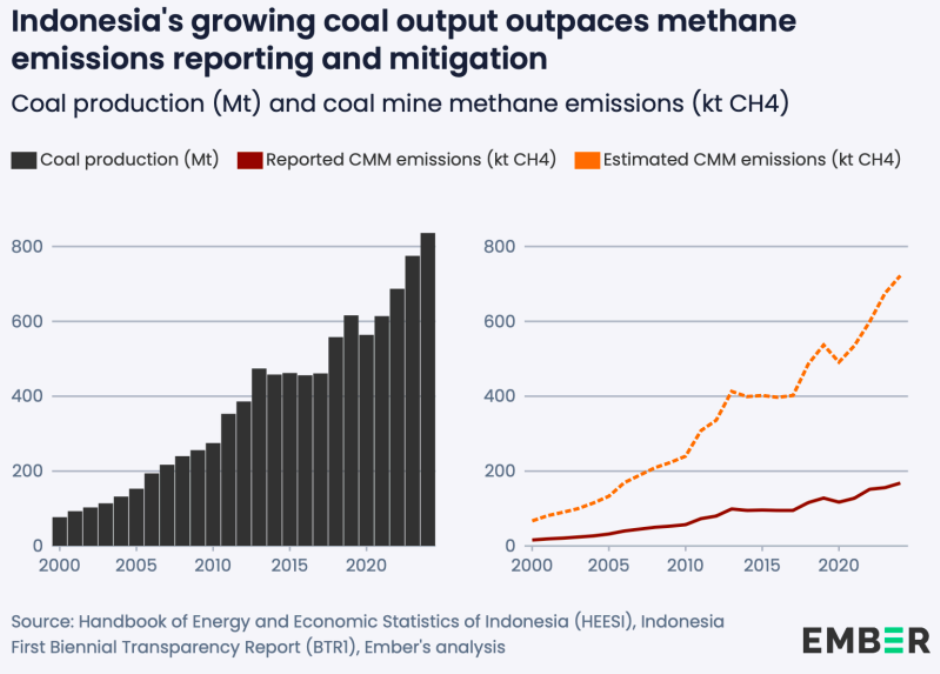Indonesia’s coal production surged from 614 million tonnes in 2021 to a record 836 million tonnes in 2024 – a 36 percent increase driven by strong demand from both export and domestic markets. However, this growth streak is now reversing as exports decline and profits weaken, signaling a turning point for the country’s coal industry, Ember said in a report.
While coal exports grew by about 36.7 million tonnes in 2024, led by stronger shipments to China, ASEAN nations, and the JKT markets (Japan, South Korea, and Taiwan), exports to India continued to shrink – falling from 109.8 million tonnes in 2022 to 107.8 million tonnes in 2024. With China and India reducing imports amid the rise of renewable power and growing domestic supply, Indonesia’s export outlook has dimmed sharply.
Domestic coal demand also rose by 34 million tonnes in 2024, driven by electricity generation and industrial users such as metal processors. Power sector consumption grew by 12.3 million tonnes, supported by 432 MW of new grid-connected coal plants and 4.2 GW of additional captive power capacity.
However, the benefits of higher output have been short-lived. Declining coal prices and rising production costs have eroded profitability, with average net profits in 2025 estimated to be 67 percent lower than in 2022. Government non-tax revenues from the coal sector have also fallen, despite record production levels.
The production boom has exacerbated environmental issues, particularly methane emissions, Mutya Yustika Research & Engagement Lead, Indonesia Energy Transition, Institute for Energy Economics and Financial Studies (IEEFA), said.

The report highlights that actual methane releases from coal mining may be up to four times higher than official figures due to outdated emission factors and undercounted underground mines. Planned underground expansions in South Kalimantan could increase coal mine methane emissions by 25 percent by 2030.
Nishant Bhardwaj, Director, Coal Mine Methane (Climate Change), Ember, said Indonesia’s coal mine methane emissions reached an estimated 722 kilotonnes of CH₄ in 2024, equivalent to about 20 million tonnes of CO₂-equivalent, nearly the entire annual emissions of Sweden. “Without mitigation, these emissions could rise by 25 percent by 2030, consuming a measurable share of the remaining global carbon budget,” Nishant Bhardwaj said.
In the first half of 2025, Indonesia’s coal output dropped by 33 million tonnes amid weaker export and domestic markets. Total demand is expected to fall by 10 percent to around 756 million tonnes in 2025, with exports declining by 46 million tonnes and only a modest 14-million-tonne increase in domestic use.
The report concludes that Indonesia’s coal boom has peaked, warning of diminishing returns and rising environmental risks. It calls for a strategic policy shift aligned with Indonesia’s climate commitments – including a moratorium on new mines, tighter production limits, better methane monitoring and capture, and a just transition plan for coal-dependent regions.
Baburajan Kizhakedath

